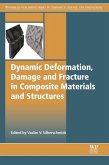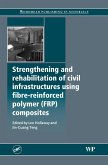Part one discusses general technical issues with chapters on topics such as blast threats and types of blast damage, processing polymer matrix composites for blast protection, standards and specifications for composite blast protection materials, high energy absorbing composite materials for blast resistant design, modelling the blast response of hybrid laminated composite plates and the response of composite panels to blast wave pressure loadings. Part two reviews applications including ceramic matrix composites for ballistic protection of vehicles and personnel, using composites to protect military vehicles from mine blasts, blast protection of buildings using FRP matrix composites, using composites in blast resistant walls for offshore, naval and defence related structures, using composites to improve the blast resistance of columns in buildings, retrofitting using fibre reinforced polymer composites for blast protection of buildings and retrofitting to improve the blast response of concrete masonry walls.
With its distinguished editor and team of expert contributors, Blast protection of civil infrastructures and vehicles using composites is a standard reference for all those concerned with protecting structures from the effects of blasts in both the civil and military sectors.
- Reviews the role of composites in blast protection with an examination of technical issues, applications of composites and ceramic matrix composites
- Presents numerical examples of simplified blast load computation and an overview of the basics of high explosives includes important properties and physical forms
- Varying applications of composites for protection are explored including military and non-military vehicles and increased resistance in building columns and masonry walls
Dieser Download kann aus rechtlichen Gründen nur mit Rechnungsadresse in A, B, BG, CY, CZ, D, DK, EW, E, FIN, F, GR, HR, H, IRL, I, LT, L, LR, M, NL, PL, P, R, S, SLO, SK ausgeliefert werden.









